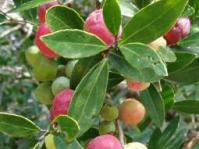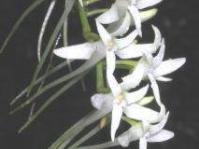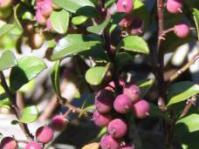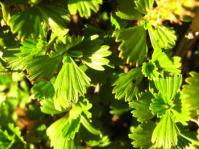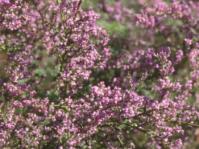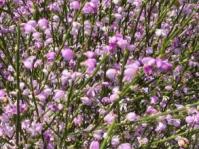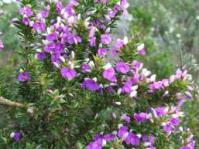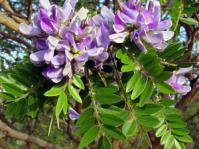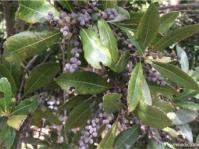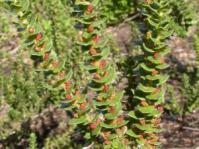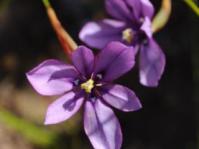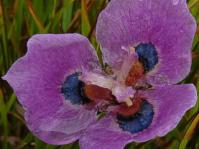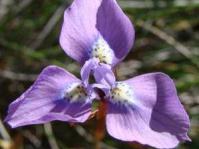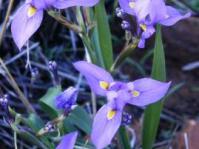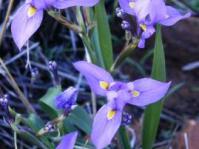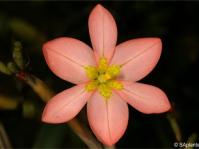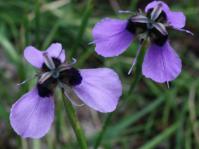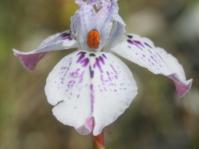Plants of the Week
Browse through all previous entries of Plants Of The Week
- Sort by date added
- Sort Alphabetically
Mystroxylon aethiopicum
Mystroxylon aethiopicum is an attractive evergreen tree that is useful as an ornamental garden tree, planted as a hedge, in groups or solitary and...
Mystacidium capense
This delicate epiphytic orchid, a mini plant with maxi roots is covered in a mass of white flowers at the beginning of summer....
Myrsine africana
This small shrub found in the wild from the Cape through tropical Africa to Asia, is a tough plant with attractive foliage and fruit, attracts birds and...
Myrothamnus flabellifolius
The leaves of the resurrection plant shrink and appear to be dead in the dry season, but miraculously turn green within a few minutes after exposure to...
Muraltia spinosa
The tortoise berry is a striking plant when covered in its masses of dainty purple flowers. Attractive and unusual spiny foliage, pretty red edible fruits...
Muraltia scoparia
Identifying the species Muraltia spinosa and M. scoparia (formerly in the genus Nylandtia) using herbarium material only, can be misleading, as the habit...
Muraltia heisteria
Muraltia heisteria is unknown to many people, yet it has so much potential as a garden plant, bringing colour, texture and charm to the garden. It...
Mundulea sericea
In a landscape characterised by grass and rock, all-year frost and drenching thunderstorms, Mundulea sericea stands out as the true star of the veld....
Moringa ovalifolia
Moringa ovalifolia is a decorative, thickset, succulent-stemmed, erect tree of the dry, desert and semi-desert areas of Namibia. It can be seen on...
Morella pilulifera
Morella pilulifera is a multi-purpose shrub or small tree with yellowish-green leaves, catkin-like flowers and dense clusters of black berries along the...
Morella cordifolia
The wax berry is an interesting addition to the garden, ideal for coastal and/or sandy gardens, and if you like plants with a long history of use to mankind...
Moraea worcesterensis
The critically endangered Moraea worcesterensis with striking dark purple flowers is very scarce in cultivation....
Moraea villosa
The peacock moraea previously occurred in great abundance in the mass spring-flower displays of the Cape lowlands. Sadly, this attractive flower has lost...
Moraea tulbaghensis
The spectacular orange or brick-red blooms of Moraea tulbaghensis appear in profusion from mid to late spring, yet are seldom seen in the wild,...
Moraea tripetala
Moraea tripetala is tolerant of various environmental conditions; it is equally successful in the wetter Cape mountains and in the semi-arid areas of...
Moraea polystachya
Pretty but dangerous (to live-stock, that is)! In a good year, usually in autumn, the large, deep blue to violet or occasionally white, iris-like flowers...
Moraea polystachya
Pretty but dangerous - to live-stock, that is! In a good year, usually in autumn, the large, deep blue to violet or occasionally white, iris-like flowers...
Moraea miniata
A stunning plant with delicate petals that flowers in masses during late winter and spring, turning patches of the veld bright salmon pink. A member of...
Moraea loubseri
Moraea loubseri is a beautiful cormous plant from the Cape West Coast with violet-mauve blooms adorned with a prominent black beard. It is one of...
Moraea longiaristata
Moraea longiaristata is endemic to the Caledon Swartberg, which is a very special mountain home to many endemic and threatened plant species. This...





